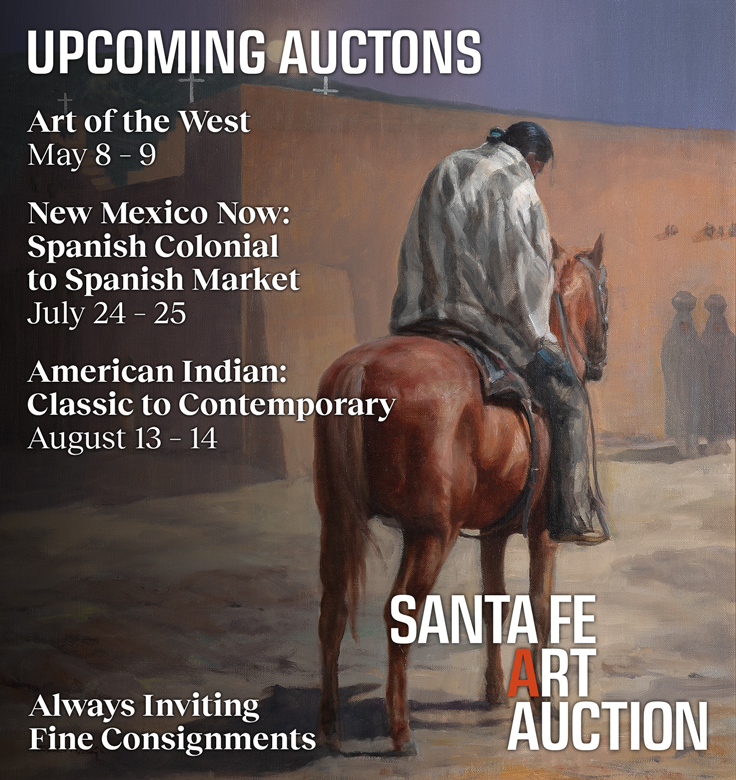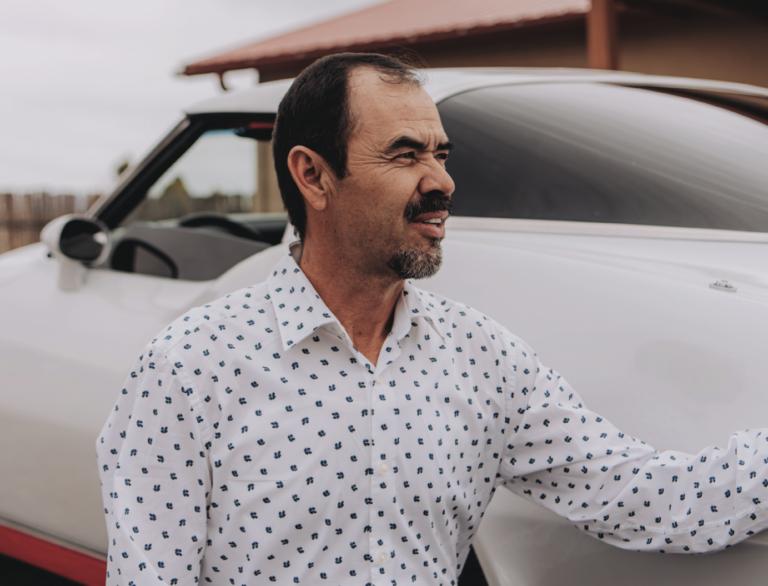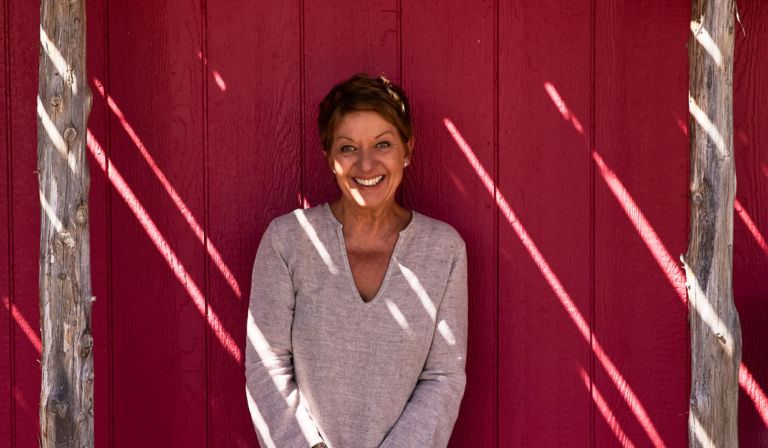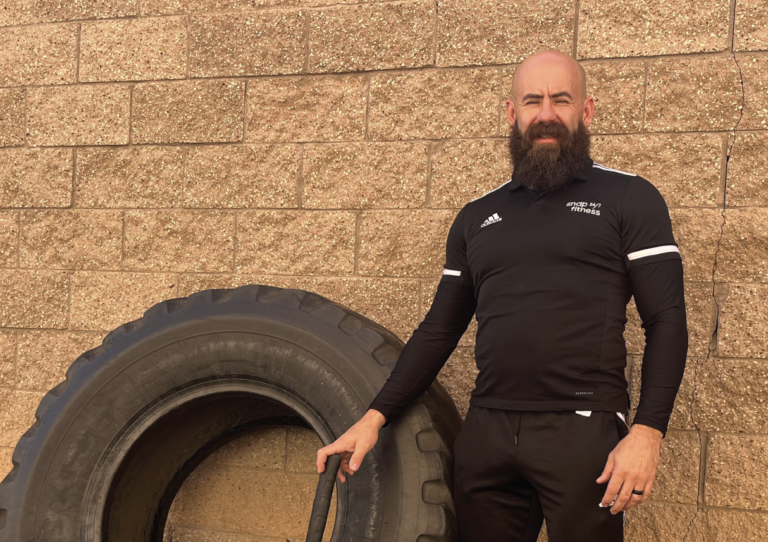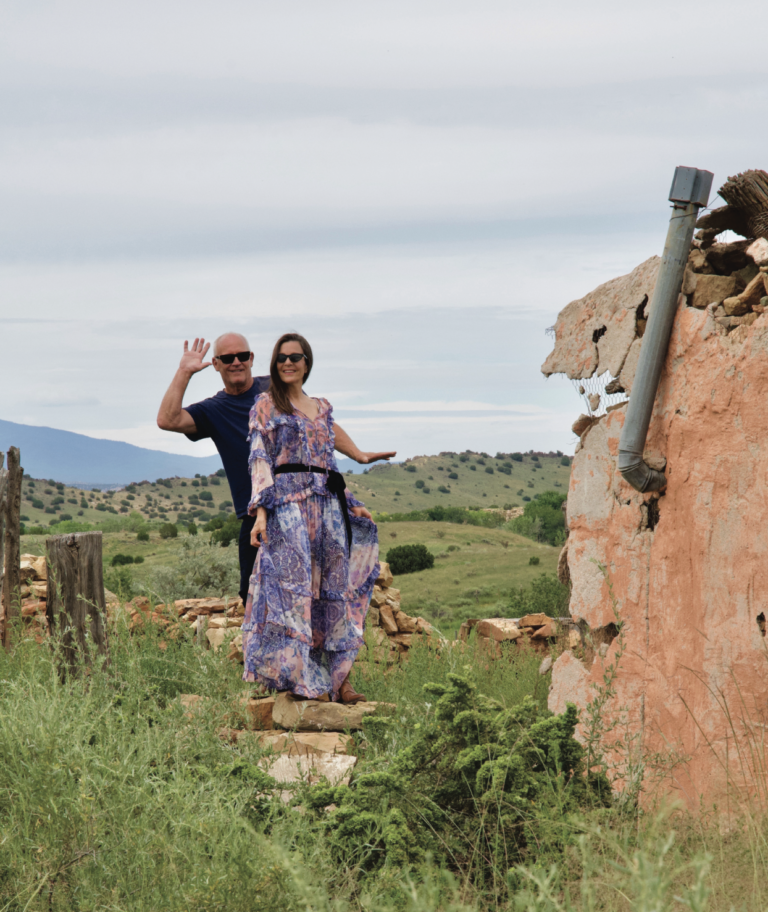YOU FINISH YOUR BREAKFAST OF SCRAMBLED eggs, green chiles, and bacon, and make your way to the gate at the front of the Taos Pueblo. It is early afternoon. You are waved in, go down a peaceful dirt road with the main Pueblo in the foreground, and are struck by the colossal presence of the mountains. John emerges from his adobe studio. He is impossibly handsome at 70, as if he has been chiseled. Maybe you will ask about that, certain he will think it’s funny.
The sun-dappled circular studio, across from his father’s house, is perhaps 15 feet across and filled with posters of former shows, a painted buffalo skull, fading black-and-white photographs of friends and family, strange and significant artifacts you don’t ask about, and a beautiful wood stove. The iron hand tools of his grandfather are set deliberately on a table. They are his only tools; he considers them sacred.
You notice that he frequently touches his sculptures. They live inside the studio and outside, facing different directions. They are friends small and large, some of them completed, some in process, but he has plans for them all, or perhaps they have plans for him. With his index finger, he moistens a rose quartz hewn woman holding a baby over her shoulder. You notice his hands, and are struck with their strangeness, size, and power; they appear to you as not just instruments of creation…they are creation (just ask Michelangelo).
You know you are in a different place, maybe a different dimension. John sits down and talks about language and history, his ancestors, his art, and his life. About everything.
You just fucking listen.
Achievement Award:
I do think it’s about time that I was recognized after 46 years of carving, and it’s a great honor to receive this. With all the well-known artists that live in Taos…to be in that company. And also, I was chosen out of 20 sculptors who applied for the Taos County Courthouse work. The subject is the history of Taos. My people arrived here in the 900s and then circled around up to Mesa Verde, and in the end here…finally settled in this beautiful valley. I loved to be the one to bring this idea to life, because I was born here, was a recognized artist, and had great ideas for this piece. [Gesturing to sculpture] There’s Taos Mountain, and below the mountain is the ancient Pueblo, with water flowing through. There are three cultures represented: Native, Spanish, and English. They wanted 10 things in this work, including history, economy, tradition, culture, and tourism. I wound up ordering a 10,000-pound Indiana limestone for the job—one of the toughest kinds of stone—and it took me five months to carve the image out. Limestone just responds so well, and this type also resists weathering.
I’m the only sculptor I know who sculpts with old tools. I don’t use any electrical tools…any electrical dremels. I’ve always wanted to work the old way, and people like my work because I like to leave scratches…don’t want to polish the work too much, not make it look machine made. My uncle taught me to work that old way by using just a few things, including a hammer, chisel, file, meat pounder, and a little texturing tool that my grandfather made—my oldest, which I’ve had for 45 years—a screwdriver that he sharpened and made a texturing tool out of.
Usually, I can visualize things without any drawings…see where it’s all going to connect…see it finished already. When I think about making a family—man, woman, and child—I can visualize them standing, maybe, next to the Taos River or Taos Mountain. [Points to sculpture] This is Taos Mountain, the Pueblo, the American flag, a farmer with his wagon, the Gorge Bridge. And then here’s a boy playing with his wooden car…and a church over there. Here’s a priest. I textured this part…hit it with the meat pounder. Here is an Indian, one of the leaders of the tribe, giving corn to the Spanish. You can see the [Spanish] shield, I got that out of a history book. And there’s a waterfall. Then there’s buffalo, representing the real spirit of the piece. Buffaloes were the main food for the tribes here, and every tribe has a buffalo dance to honor them. So powerful, and I think they help bring things out in me. Over there is a strong woman, a determined woman. She’s looking up and kind of giving thoughts and prayers, good thoughts. There’s an eagle feather fan, a blessing of her triumph, and then there’s corn…an abundance of food.
I wanted good feelings with that, with the Spanish arriving; I didn’t want violence. I felt that this is the way it happened, at least initially, when the Spanish came and were given food. There is also the ancient Pueblo, the way I thought it might have looked.
WANT TO READ MORE? SUBSCRIBE TO SANTA FE MAGAZINE HERE!
Photo SFM

